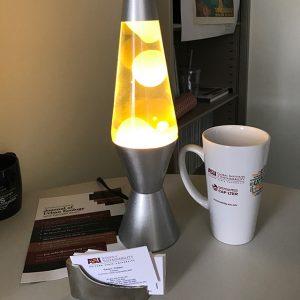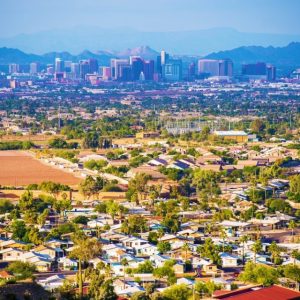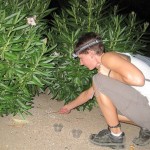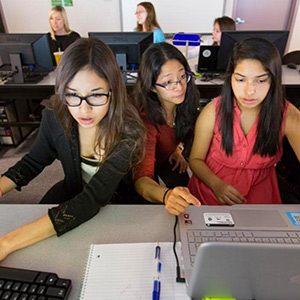Snake removal research hopes to stop snake killings in Phoenix
July 12, 2021
 A recent study published in Global Ecology and Conservation examined over 2,300 snake removals in Phoenix between 2018 and 2019, comparing removal locations to neighborhood-level socioeconomic and demographic factors. The article, entitled Unwanted residential wildlife: Evaluating social-ecological patterns for snake removals, found snake removals occurred more frequently in high-income neighborhoods with recently constructed homes closer to undeveloped desert.
A recent study published in Global Ecology and Conservation examined over 2,300 snake removals in Phoenix between 2018 and 2019, comparing removal locations to neighborhood-level socioeconomic and demographic factors. The article, entitled Unwanted residential wildlife: Evaluating social-ecological patterns for snake removals, found snake removals occurred more frequently in high-income neighborhoods with recently constructed homes closer to undeveloped desert.
Western diamondback rattlesnakes, which are venomous, were extracted most often, making up 68% of removals. The non-venomous Sonoran gopher snake was a distant runner-up, making up 16% of removals.
Sustainability scientist Heather Bateman, an associate professor at ASU who is the lead author the study, said the size and depth of the dataset from Rattlesnake Solutions is an invaluable new source of information.
Read more about the work, supported by the NSF-funded Central Arizona-Phoenix Long-Term Ecological Research program, in this AZ Central article.
The paper's abstract follows.




 Explore opportunities for building positive futures by becoming a CAP LTER postdoctoral fellow. The fellow works with the Scenarios and Futures research team, focusing on scenario co-development and spatially-explicit scenario modeling of urban change under possible alternate future scenarios. He or she plays a key role in the scenario-development process, modeling, analysis and visualization.
Explore opportunities for building positive futures by becoming a CAP LTER postdoctoral fellow. The fellow works with the Scenarios and Futures research team, focusing on scenario co-development and spatially-explicit scenario modeling of urban change under possible alternate future scenarios. He or she plays a key role in the scenario-development process, modeling, analysis and visualization.
 In recognition of
In recognition of  Being elected to the National Academy of Sciences is one of the highest honors for a scientist, and it also means that members are qualified to inform the president and Congress about issues related to their expertise. Two Arizona State University sustainability scientists,
Being elected to the National Academy of Sciences is one of the highest honors for a scientist, and it also means that members are qualified to inform the president and Congress about issues related to their expertise. Two Arizona State University sustainability scientists,  ASU faculty helps establish research organization to strengthen the Environmental Protection Agency's ability to assess social benefits and costs of environmental policies
ASU faculty helps establish research organization to strengthen the Environmental Protection Agency's ability to assess social benefits and costs of environmental policies
 Senior Sustainability Scientist
Senior Sustainability Scientist  Tempe Town Lake has been a part of the city's landscape for over 19 years, and Hilairy Hartnett's lab has been measuring and collecting data there for the past 13.
Tempe Town Lake has been a part of the city's landscape for over 19 years, and Hilairy Hartnett's lab has been measuring and collecting data there for the past 13.
 The
The 
 Save the date! CAP LTER will be holding its 20th Annual Poster Symposium and All Scientists Meeting on January 5th, 2018 at ASU's SkySong facility in Scottsdale. Weiqi Zhou, Professor in the State Key Laboratory of Urban and Regional Ecology, Research Center for Eco-Environmental Sciences, Chinese Academy of Sciences, will be the keynote speaker. Dan Childers will give us an update on CAP LTER and there will be presentations by the leaders of the Integrated Research Teams.
Save the date! CAP LTER will be holding its 20th Annual Poster Symposium and All Scientists Meeting on January 5th, 2018 at ASU's SkySong facility in Scottsdale. Weiqi Zhou, Professor in the State Key Laboratory of Urban and Regional Ecology, Research Center for Eco-Environmental Sciences, Chinese Academy of Sciences, will be the keynote speaker. Dan Childers will give us an update on CAP LTER and there will be presentations by the leaders of the Integrated Research Teams.
 Save the date! CAP will be holding its
Save the date! CAP will be holding its  The Ecological Society of America's SEEDS initiative, which aims to increase diversity in the field of ecology, is recruiting undergraduate students from underrepresented groups for the SPUR fellowship program. This program places students at ecological research sites across the United States. Several LTER sites are part of the SPUR fellowship program this year: Central Arizona-Phoenix (CAP) LTER, Harvard Forest LTER, Baltimore Ecosystem Study LTER, Cedar Creek LTER, and Kellogg Biological Station LTER. An additional site is the Llado River Field Station in Texas.
The Ecological Society of America's SEEDS initiative, which aims to increase diversity in the field of ecology, is recruiting undergraduate students from underrepresented groups for the SPUR fellowship program. This program places students at ecological research sites across the United States. Several LTER sites are part of the SPUR fellowship program this year: Central Arizona-Phoenix (CAP) LTER, Harvard Forest LTER, Baltimore Ecosystem Study LTER, Cedar Creek LTER, and Kellogg Biological Station LTER. An additional site is the Llado River Field Station in Texas. A group of high school girls in Mesa Public Schools
A group of high school girls in Mesa Public Schools 